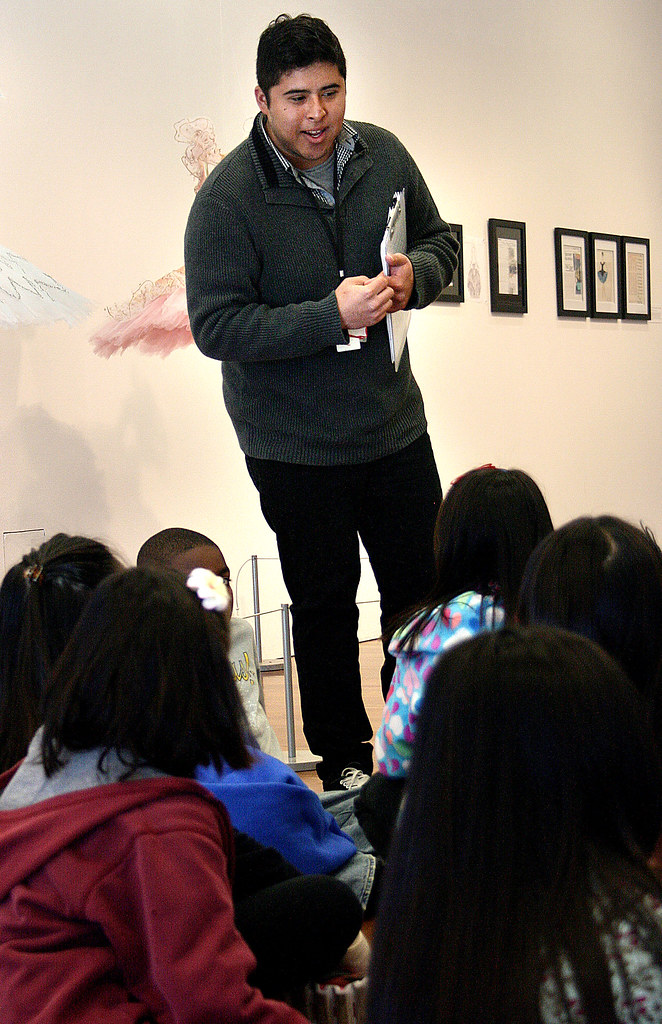San Franciscans have the opportunity to view one of the world’s most acclaimed paintings at the de Young Museum in Golden Gate Park, featuring Johannes Vermeer’s masterpiece, “Girl with a Pearl Earring.”

The de Young Museum is the first venue in the American tour of “Girl with a Pearl Earring: Dutch Paintings from the Mauritshuis.” It has acted as a muse for various outlets of art and has been an inspiration for a novel and film.
The painting, which is commonly referred to as “the Dutch Mona Lisa,” is of a girl with a porcelain face, big round eyes, slightly ajar mouth, wearing a decorative blue and yellow headscarf and a big pearl earring that dangles from her left ear.
The woman in the painting has been identified as a tronie — a term used in the 17th century to describe a portrait of a live model with exaggerated features so that the person is not identifiable.
Communications major, Derek Mora, 21, has been leading tours at the museum for seven years. In Mora’s seventh and last year as a de Young Ambassador intern, Vermeer’s painting ranks high with all the art he has witnessed which spans from Cheech Marin’s Chicano art exhibition to King Tut’s exhibition featuring 3,000-year-old Egyptian artifacts.
“’Girl with a Pearl Earring’ is by far the most iconic piece I’ve seen during my de Young time,” Mora said. “It’s really amazing to see these various art forms for so long and then end with such a famous piece of work.”
Mark Dean Johnson, professor of art and SF State gallery director, associates the painting with something more than aesthetics.
“It goes beyond capturing the beauty of the subject matter,” Johnson said. “But it truly captures the essence of the life of a human being at the time.”
Johannes Vermeer painted the portrait around 1665. Not much is known about the artist except that he is famous for painting everyday life from inside his home. While other artists tended to paint more scenic and hierarchical people at the time, he painted regular people in their daily activities.
“Some artists focus on the affluent or the aristocracy but he focused on what we call the middle class today,” art professor Andrea Hassiba, said. “He painted everyday life from his house like people pouring milk, people standing by a window, children on the floor with their toys; he painted ordinary life which was radical.”
During the “Dutch Golden Age” these were known as genre paintings. According to SF State art professor Kiersten Jakobsen, every object within a genre work has a specific meaning.
“Viewers of all kinds would easily find and attribute meaning to every object within a work, from the careful placement of a pitcher to the gentle fold of an exquisite and foreign rug within the frame,” Jakobsen said. “These viewers read certain morals and lessons in every detail included specifically for a game of decoding and solving whatever riddle might be present.”
Out of Vermeer’s 34 known works this is the only art piece that zooms in and looks solely at the subject. According to Jakobsen, there is no specific message hidden in the painting, making it stand out from the rest.
“’Girl with a Pearl Earring’ is a portrait but it defies the genre; the sitter looks neither happy nor sad,” Jakobsen said. “Instead, she is almost expressionless and the pearl earring, certainly a marker of wealth, is a detail we cannot solve, despite how much it commands our attention.”
The painting does not have an epic background story, nor does it have secret lessons hidden in its details, but it is Vermeer’s masterpiece. Jakobsen connects the enigmatic background of “Girl with a Pearl Earring” to the audience’s ongoing interest.
“Works of art that thwart interpretation are the ones that survive centuries,” Jakobsen said. “Years pass, but the mystery remains.”
The painting will be on display until June 2 at the de Young Museum.







